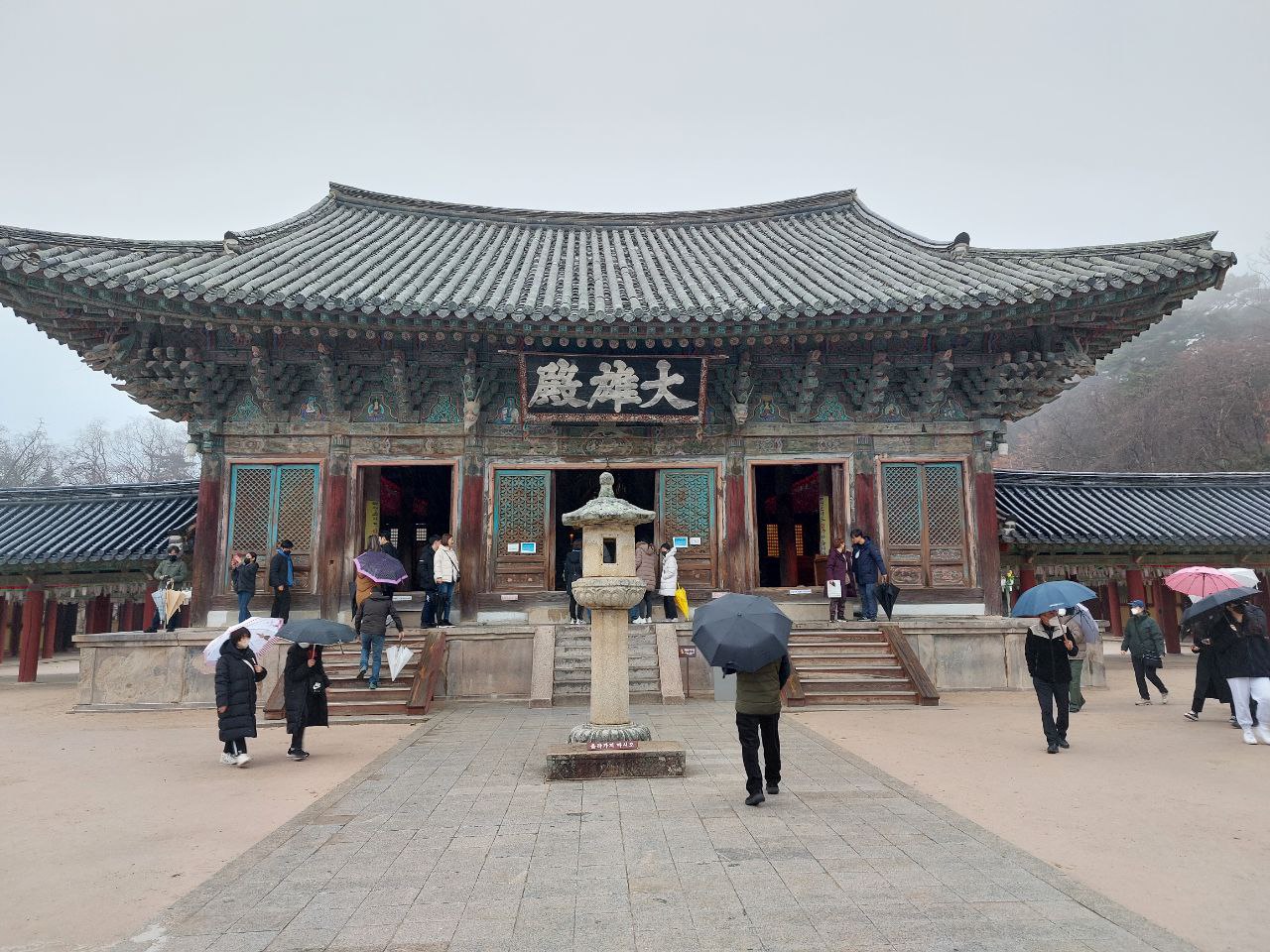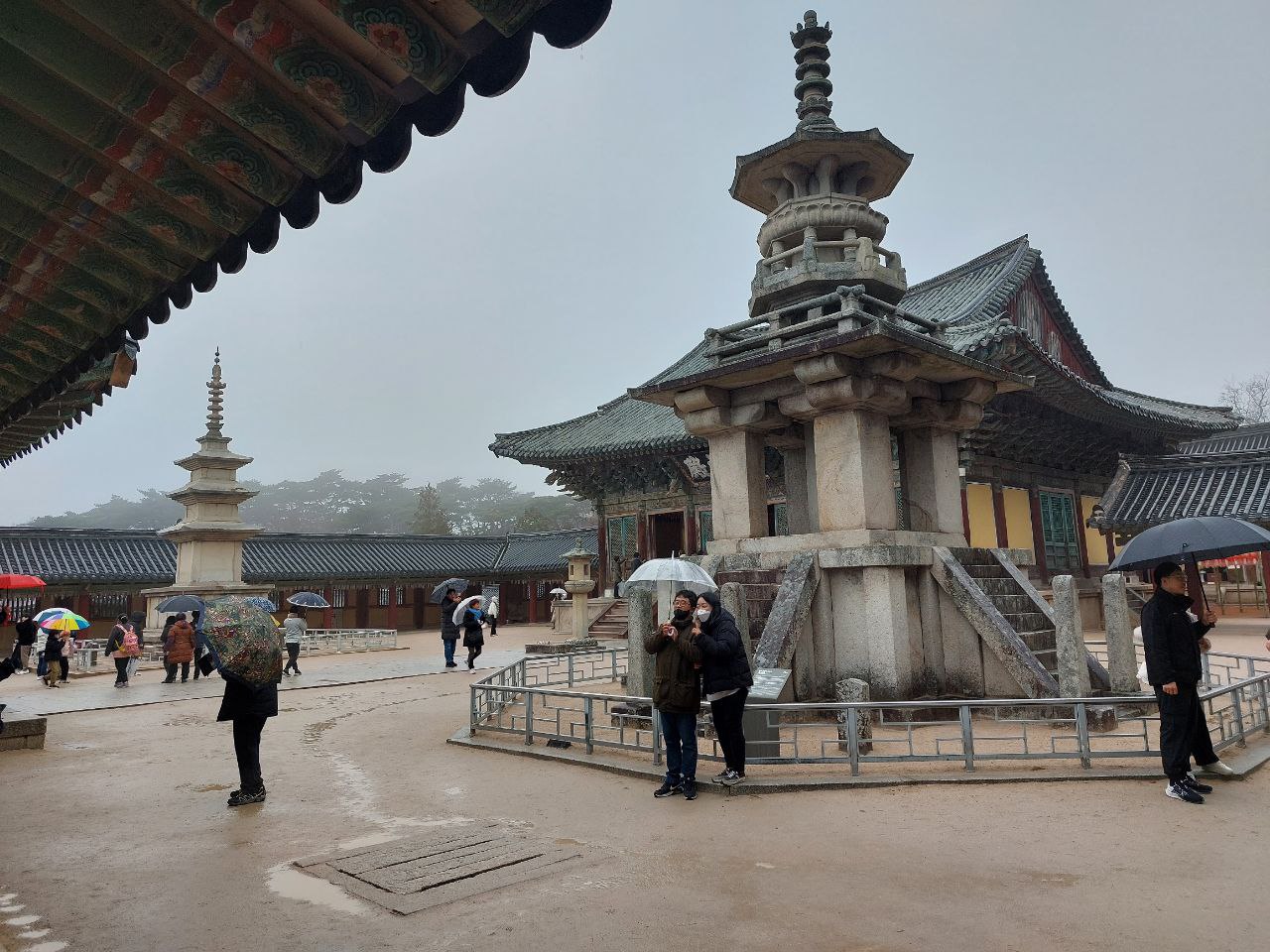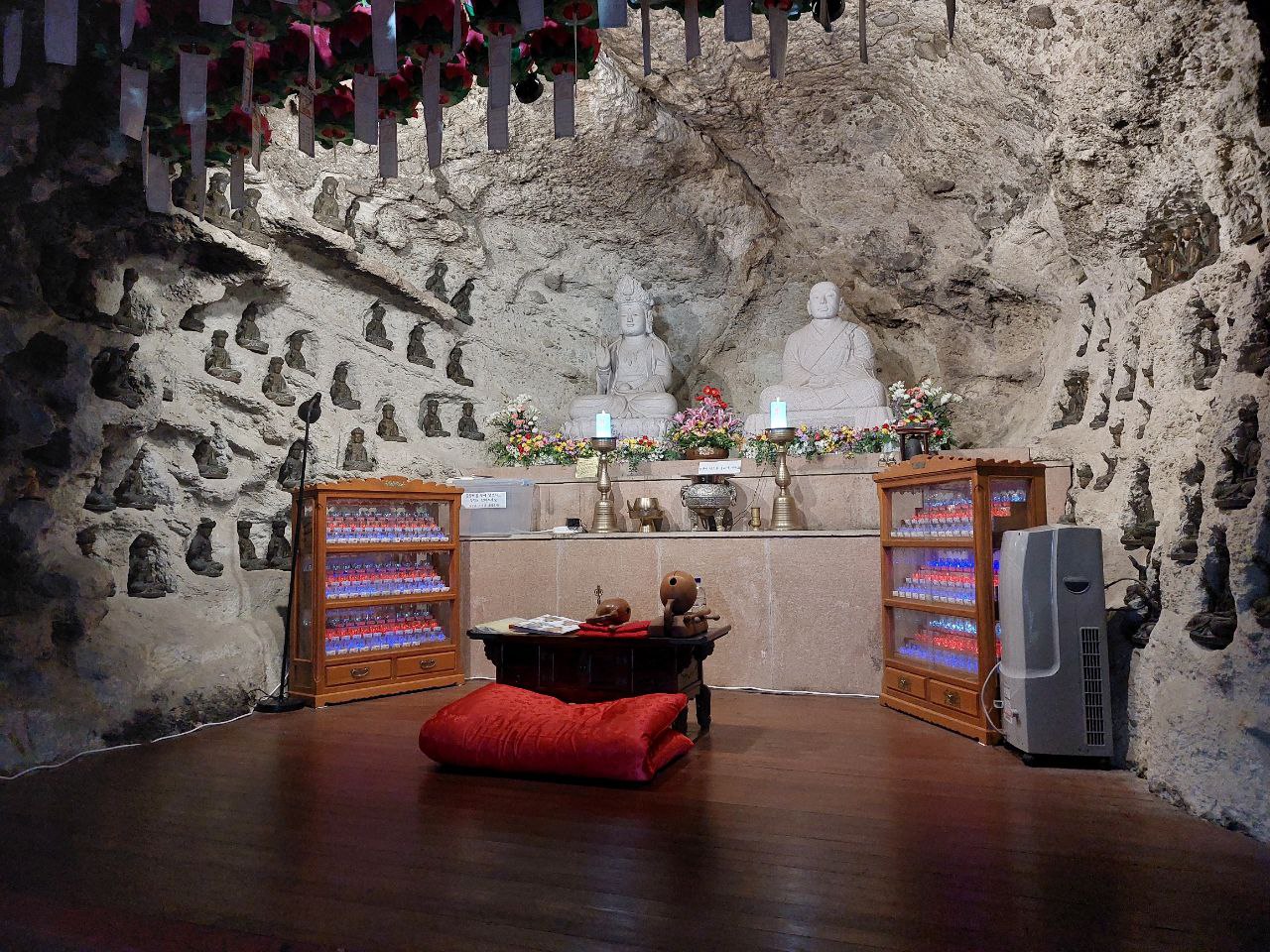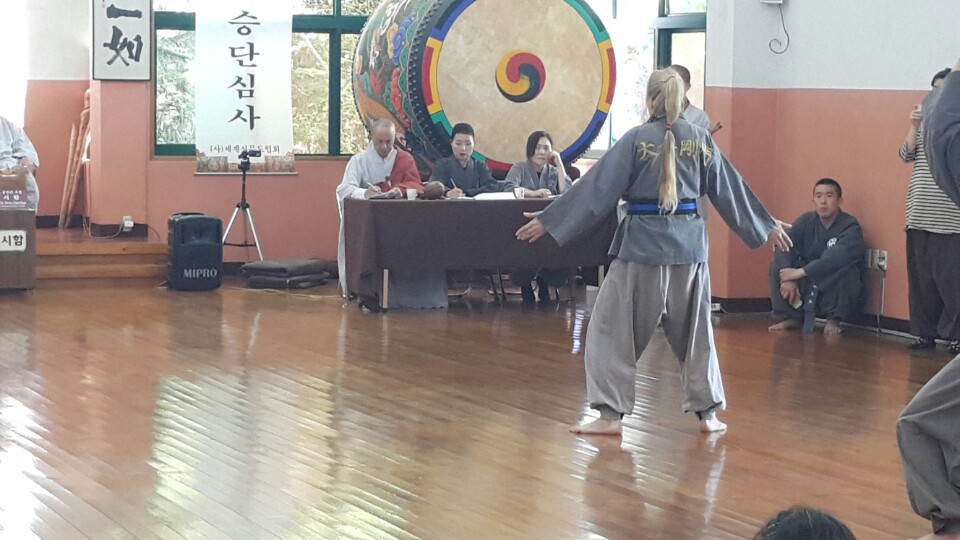- 한국어
- English
- 日本語
- 中文
- العربية
- Español
- Français
- Deutsch
- Pусский
- Tiếng Việt
- Indonesian
By Honorary Reporter Melline Galani from Romania
Photos = Melline Galani
Gyeongju, Gyeongsangbuk-do Province, is one of Korea's most popular tourist destinations. As the former capital of the Silla Kingdom, it is home to several UNESCO World Heritage Sites and 31 national treasures, making it great for those interested in the nation's history. Since 2014, I visit every year two temples -- Bulguksa and Golgulsa -- with my trips to both places this year being from Jan. 14-15.

Daeungjeon Hall is the main facility at Bulkguksa Temple in Gyeongju, Gyeongsangbuk-do Province
Bulguksa is famous for its architectural beauty, which I fell in love with at first sight. Built in 528, the temple was later rebuilt in 751 by Silla's chief minister Kim Dae-seong. It was later heavily damaged by fire during the 16th-century Imjin War and despite restoration efforts over centuries, the temple became much smaller.

The pagodas Dabotap (right) and Seokgatap (left) are housed within Bulguksa Temple in Gyeongju, Gyeongsangbuk-do Province.
Bulguksa was also designated a UNESCO World Heritage Site in 1995 and houses seven national treasures like the pagodas Dabotap and Seokgatap. With the quintessential beauty of Buddhist architecture preserved, the temple is a must-see.

This shrine in a cave is at Golgulsa Temple in Gyeongju, Gyeongsangbuk-do Province.
Located at the foot of Hamwolsan Mountain in Gyeongju, Golgulsa has 12 caves on a tall cliff with the Rock-carved Seated Buddha at Golguram Hermitage at the highest point. Designated National Treasure No. 581, the statue has an impressive stature of 4 m high and 2.2 m wide, with its surrounding cliff also remarkable.

My friend takes a belt test in the Buddhist martial art seonmudo at Golgulsa Temple in Gyeongju, Gyeongsangbuk-do Province.
Visitors can also experience a one-of-a-kind temple stay at Golgulsa, which offers instruction in seonmudo, a Buddhist martial art that combines physical and reflective meditation and stresses harmony of body and mind through conscious breathing. During my amazing weekend stay at the temple, I practiced seonmudo, ate temple food, took part in Buddhist rituals like the 108 prostrations, rode a horse and practiced archery.
Because Golgulsa is popular among foreign visitors, it has staff and volunteers who speak English. Also available are winter and summer camps for children and tea ceremonies for those interested in traditional tea.
With a history spanning over two millennia, Korean Buddhism offers a quiet refuge for finding peace at these two tranquil temples.
msjeon22@korea.kr
*This article is written by a Korea.net Honorary Reporter. Our group of Honorary Reporters are from all around the world, and they share with Korea.net their love and passion for all things.